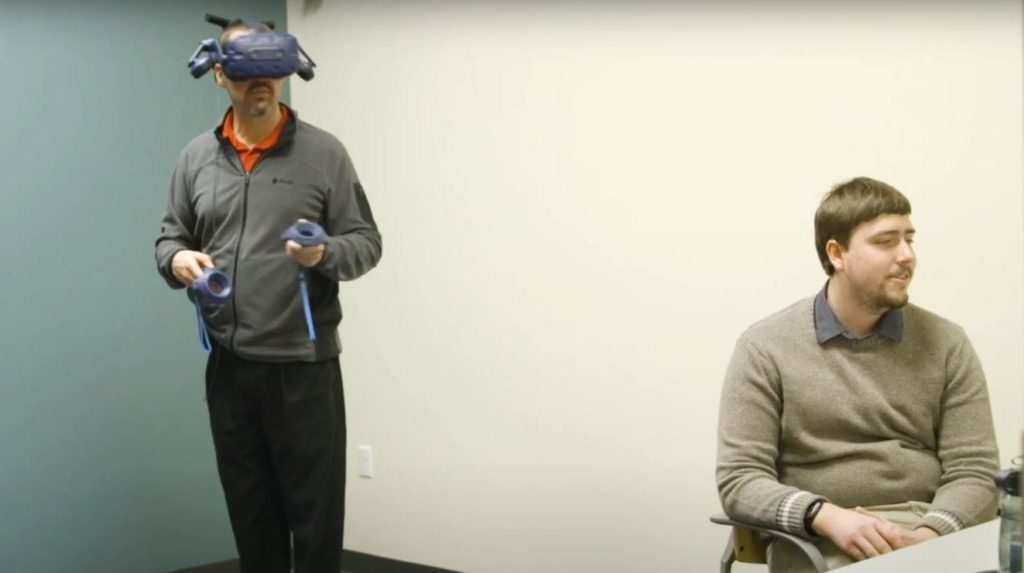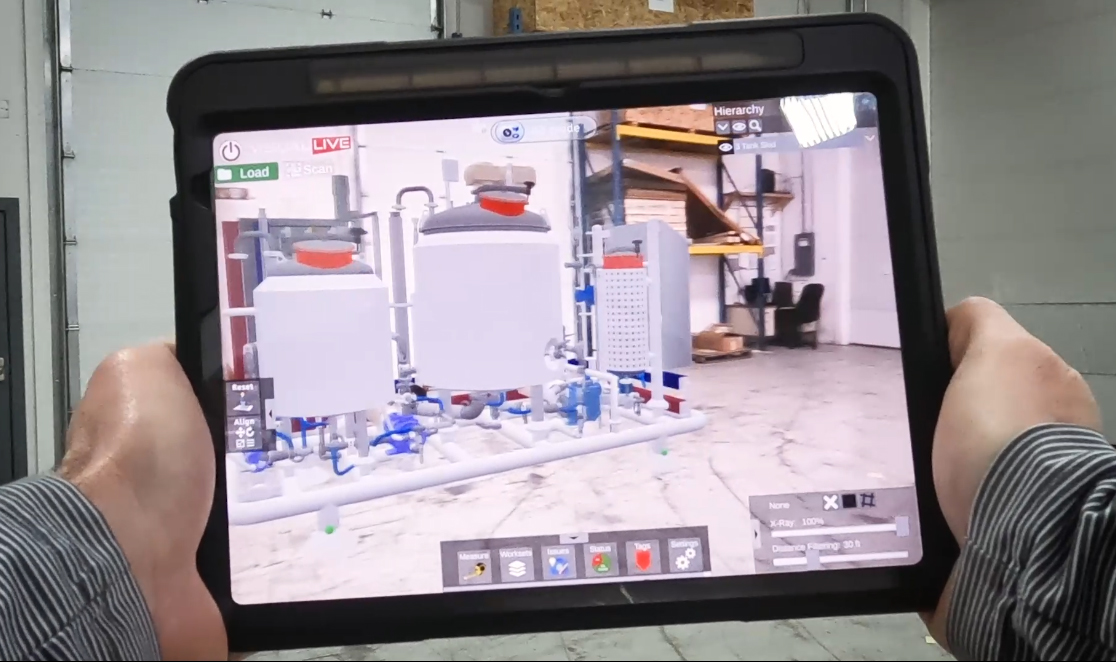
The COVID-19 pandemic has upended the working lives of people across the globe, and Foth’s hundreds of manufacturing clients are no different. In the early days of the pandemic, our members and clients needed to shift their operations in a matter of days. While no one knew how long the pandemic might last, we did know that precautions would be needed to keep personnel safe so food and beverage manufacturers could keep producing essential products relied on by millions. This meant we needed to quickly figure out how to work better, safer, and from a distance.
As we gradually adapted to working remotely and meeting virtually, the pandemic opened up opportunities to utilize our technology in new ways. Foth engineers were able to continue developing client projects thanks to digital tools like mobile scanning equipment, Autodesk 3D programs to work with data, and Virtual Reality (VR). These applications are invaluable as they provide us with flexible ways of helping our clients under COVID-19 restrictions.
Leveraging Technology During the Pandemic
Using VR to share 3D models of design changes at a manufacturing plant isn’t new to Foth or our clients, but the extent to which we use the technology, the ways in which we collaborate on it, and how it facilitates decision making has changed over the last year.
Prior to the pandemic, during a typical project review meeting Foth met with a client team of 30 or 40 people to review a 3D model of design changes at a facility using a VR headset. With the need to minimize contact and the inability to share headsets, a Foth member wearing a VR headset can now stream their presentation over virtual meeting software to share a 3D model with a client. This method allows clients to be immersed in the model and see for themselves how the design will work. The ability to isolate different systems within the 3D model allows us to tailor the information to the person viewing it, whether they are safety, process, or operations personnel. That has been a great benefit because we can meet with our clients virtually and go through the 3D model, giving them peace of mind, enabling remote decision-making, and saving time and money.
We use various technologies to aid us in building the 3D model, all of which we’ve improved in response to the challenges presented by COVID-19. To minimize disruption to our clients’ operations, Foth uses a FARO tripod laser scanning system to quickly capture accurate and complete measurements of an entire building. The system captures the as-built data in one visit, making the process less time-consuming and reducing the need for contact.
Once scanning is complete, we use the FARO SCENE software to take the data from all scans and put it together in a point cloud, allowing us to create photorealistic point clouds and 360° photos of the environment. Design work, such as piping and equipment layouts, is done with Autodesk Plant 3D; we then bring the files together in the Navisworks viewer to create a 3D model we can share with our clients. Navisworks allows us to do clash detection during the preconstruction phases to identify interferences and conflicts in different systems, such as piping, architectural, structural, utilities, electrical, and HVAC.
Immersive Technologies Beyond the Pandemic
Further advances in technology will pave the way for even more robust ways of sharing our work with clients. Foth has moved into the world of Augmented Reality (AR) and Mixed Reality (MR), and has recently trialed the Trimble XR10, which uses HoloLens2 technology, that attaches to a safety approved hardhat. While AR adds to the physical world, MR merges the real and virtual worlds. The device allows us to bring up images of piping or equipment and have it appear as a 3D holographic image on top of the as-built environment.
Following required sanitizing protocols, Foth successfully tested the system out last fall. With this technology, we can better communicate our design to clients, increasing buy-in and reducing costs in the long run. As technology improves, we envision that the field of view will be wider with crisper resolution, making AR even more useful in the years ahead.
The COVID-19 pandemic has forced us all to change the way we work, and for Foth, it has allowed us to introduce new ways of using technology to deliver better for clients. We see these opportunities continuing to grow in the future and look forward to expanding the uses of immersive technologies with our clients on their upcoming projects.
Markets: Consumer Products, Food and Beverage, Pulp and Paper
Services: Engineering for Product Manufacturing
Related Insights
From Ideation to Realization: How Serial 1 Automation Accelerates Production Innovation
10.13.2022 | Joseph Spychalla





